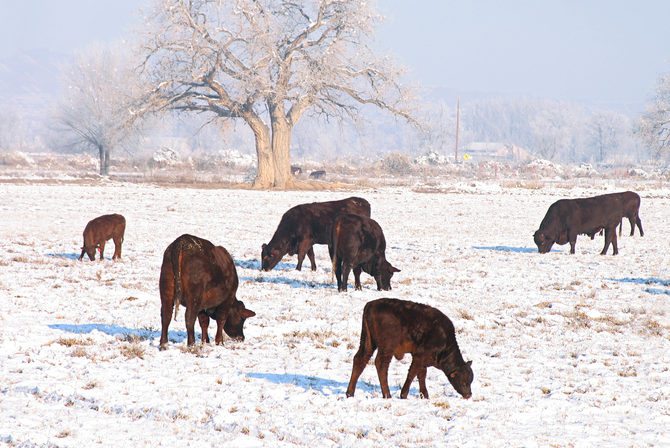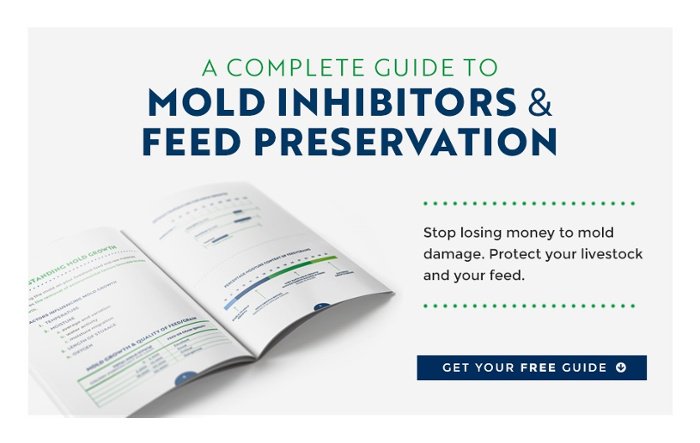
The Farmer’s Almanac is predicting a colder than average winter in 2017, which means it’s time to start preparing your livestock for the chill, especially if you’re from Texas. Winterizing your ranch is a must this season with snow expected to fall throughout much of the southern US. The Farmer’s Almanac historically has predicted the weather at an 80% accuracy rate, so don’t let November’s low-80’s weather lull you into a false sense of security.
Use the following three methods to ensure that your livestock operation is prepared to weather the cold.
1. Winterize Barns, Stables, and Outbuildings
Your barn, stables, coops, and other ranch buildings hold your most valuable assets—livestock, feed, and equipment—so they need to be in tip-top shape for the cold weather.
Things to check:
- Roofing: Check the shingles to make sure they are in good condition. Also, look for existing leaks or potential areas that could cause leaks. All leaks should be repaired before the snow and cold arrive because the problem will only get worse in wet, cold conditions.
- Insulation: Most livestock in Texas aren’t accustomed to frigid temperatures, so it’s important to keep them warm and comfortable by insulating your barns, stables, and coops. Some animals, especially poultry, can experience stress due to unusual weather changes. The more normal their environment feels, the better.
- Check for potential internal hazards: Tangled ropes and cords, holes in the floor, chemicals, medications, and sharp objects should be safely stored away from the reach of livestock. In addition, make sure all fire hazards are identified and removed, such as flammable products, wires and extension cords, portable electronic equipment, and appliances.
- External hazards: Clear any brush, overhanging tree branches, and equipment away from barns and other outbuildings that could be damaged during high-wind storms.
2. Stock Up on Feed
Cold, snowy winters severely limit foraging opportunities. It’s important to properly store hay and grains during cold weather to supplement natural feed, especially for livestock that live in warm environments—such as Texas—and are accustomed to foraging.
Take the following steps to minimize feed waste during the winter months:
- Use feeders to provide hay in smaller-than-normal amounts. This will cut down on the feed that gets wasted from being soiled and trampled.
- Feed livestock in a dry environment to reduce the chance of mud and moisture that can contaminate hay and grains.
- Feed hay stored outside to livestock before you use the feed stored in barns. This will lessen the amount of feed that spoils.
In addition to stocking up on feed, you also need to ensure livestock have access to a constant source of clean water.
3. Keep Supplies & Equipment on Hand
Preparing for the unknown can save you a lot of time and hassle once the cold weather arrives. Here are just a few of the supplies you should have on hand this winter:
- Sand and rock salt to help break down ice buildup and eliminate slippery surfaces. This is less important for poultry, but hooved livestock have little to no grip on slippery surfaces, making them prone to injury.
- Medical supplies: You never know when an animal might get injured and become sick. Keep these essential items on hand at all times and you’ll be prepared to handle basic medical situations:
- Vet wrap, gauze, and alcohol prep pads
- Scissors and tweezers
- Disposable non-latex gloves
- Epsom salts
- Thermometer
- Topical antiseptic and antibiotic ointment
- Vet contact information
- Duct tape (or another durable tape)
- A generator: You don’t want to be without power in the dead of winter, which will eliminate your ability to supply heat or fresh water to your livestock.
Winterizing your livestock ranch will save you time and money in the long run. With content livestock, less feed waste, and a safe environment to weather the cold, your operation will be ready to withstand the elements.



You made some really good points there. I looked on the internet
to learn more about the issue and found most people will go along with your views on this site.